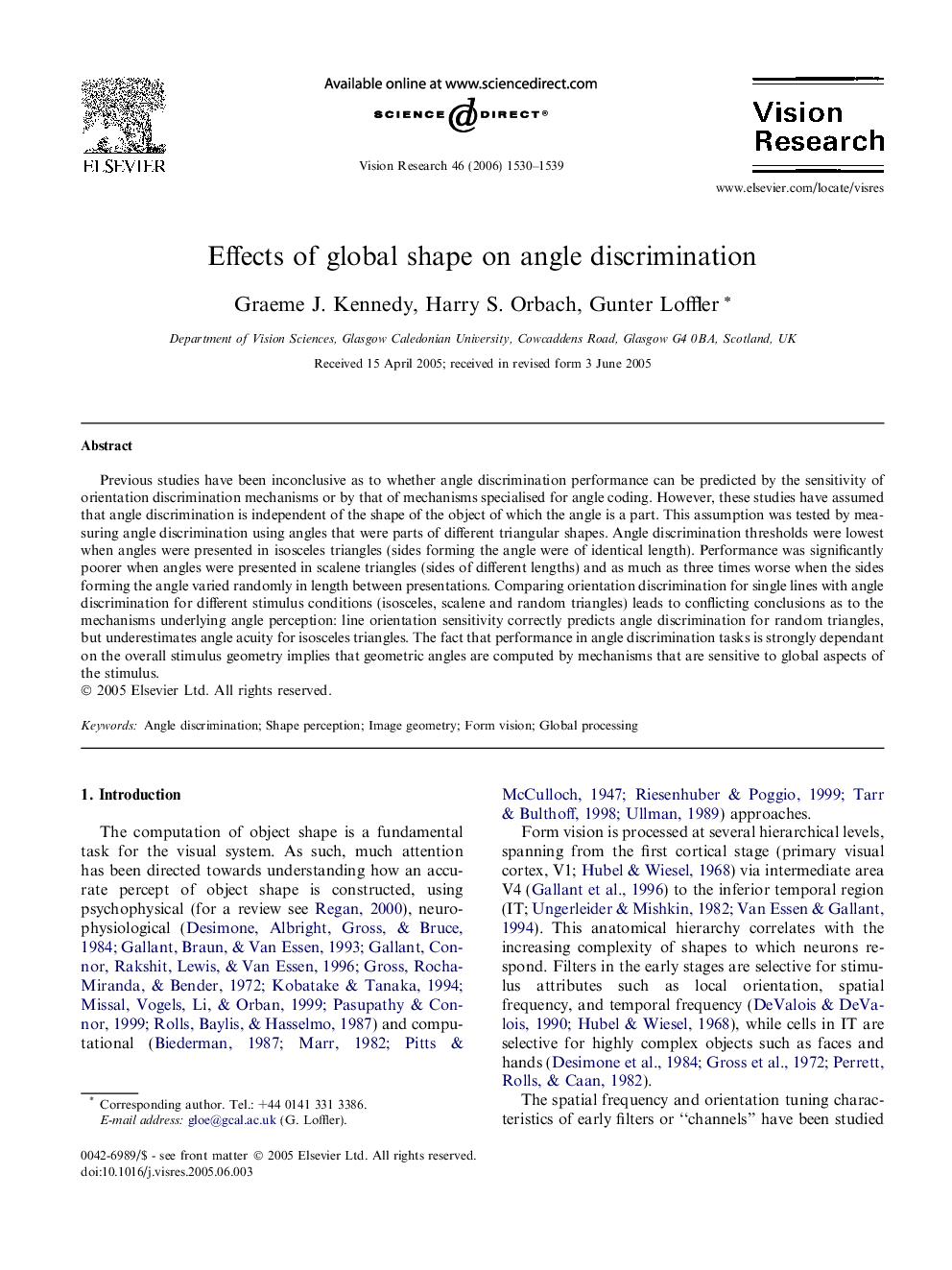| Article ID | Journal | Published Year | Pages | File Type |
|---|---|---|---|---|
| 4035324 | Vision Research | 2006 | 10 Pages |
Previous studies have been inconclusive as to whether angle discrimination performance can be predicted by the sensitivity of orientation discrimination mechanisms or by that of mechanisms specialised for angle coding. However, these studies have assumed that angle discrimination is independent of the shape of the object of which the angle is a part. This assumption was tested by measuring angle discrimination using angles that were parts of different triangular shapes. Angle discrimination thresholds were lowest when angles were presented in isosceles triangles (sides forming the angle were of identical length). Performance was significantly poorer when angles were presented in scalene triangles (sides of different lengths) and as much as three times worse when the sides forming the angle varied randomly in length between presentations. Comparing orientation discrimination for single lines with angle discrimination for different stimulus conditions (isosceles, scalene and random triangles) leads to conflicting conclusions as to the mechanisms underlying angle perception: line orientation sensitivity correctly predicts angle discrimination for random triangles, but underestimates angle acuity for isosceles triangles. The fact that performance in angle discrimination tasks is strongly dependant on the overall stimulus geometry implies that geometric angles are computed by mechanisms that are sensitive to global aspects of the stimulus.
